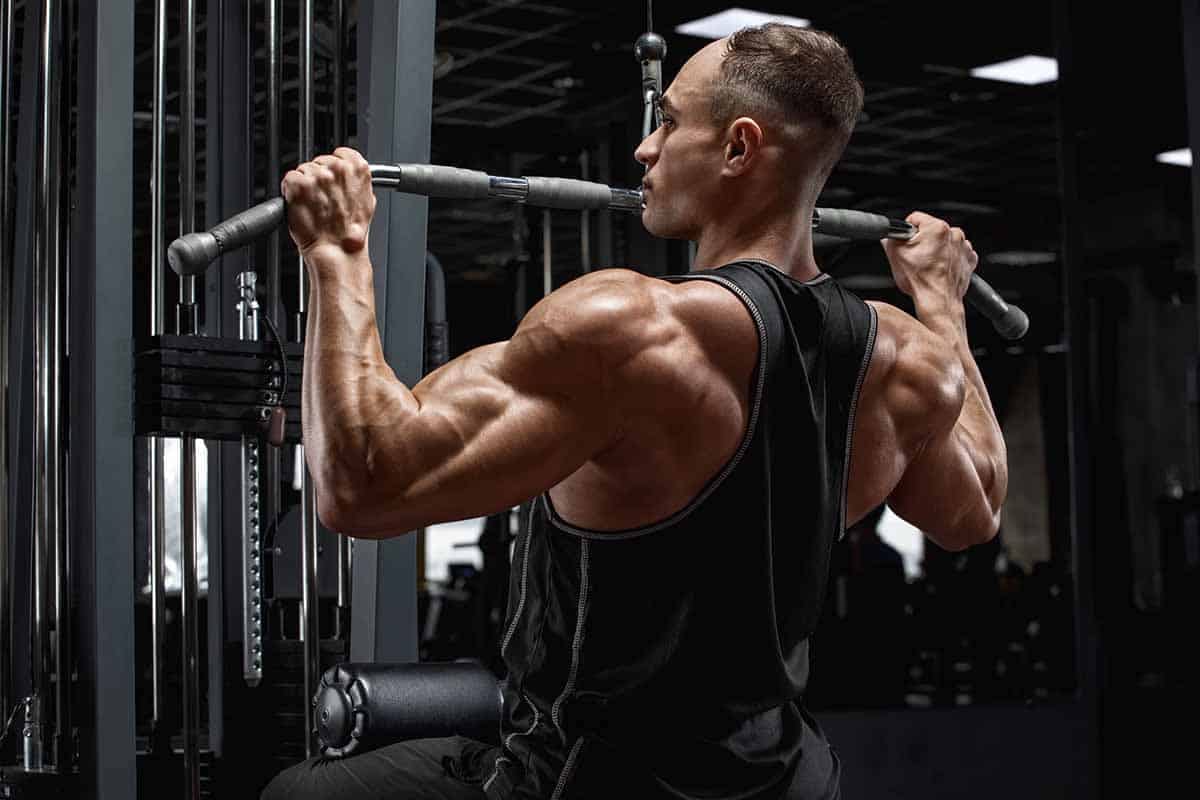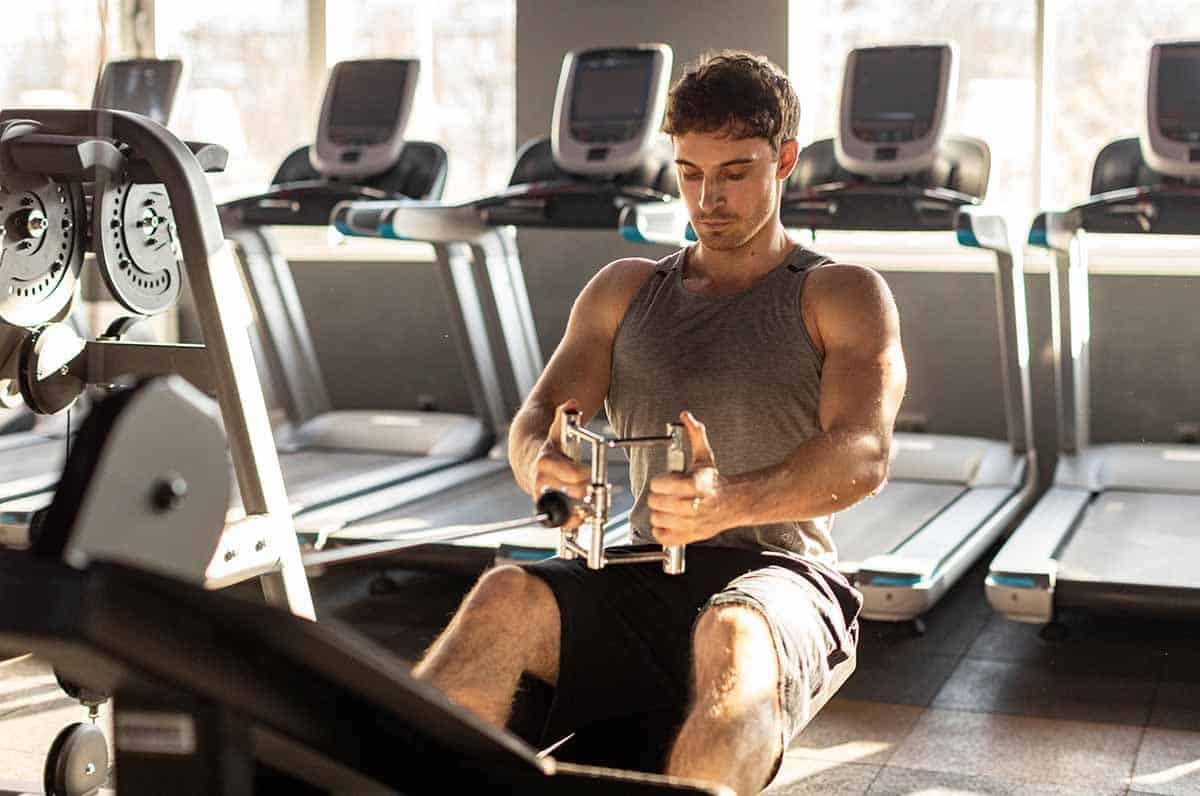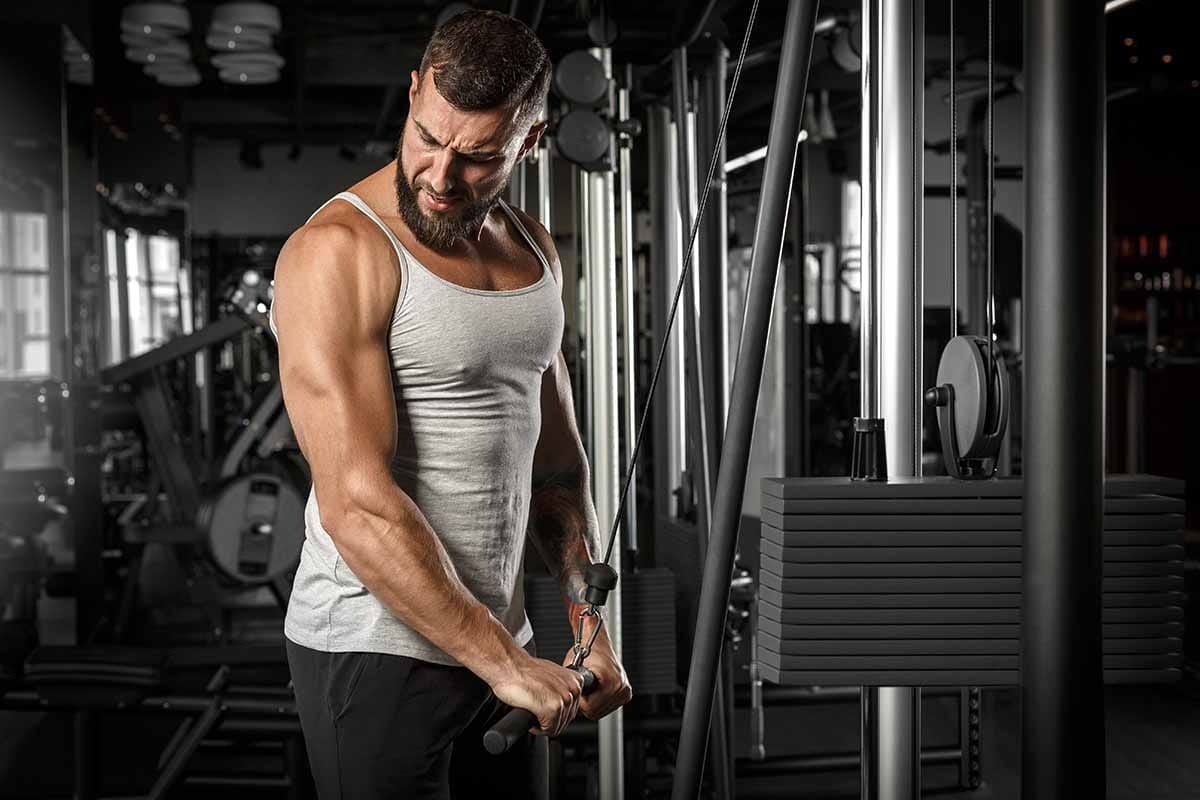6 Essential Back Isolation Exercises to Reduce Pain
What are the best back isolation exercises you can do at gym and at home. Check out the tips on doing pull down, seated cable row and more...
If you work at an office, like many of us, you’re probably no stranger to having a stiff or painful back.
Although we can’t make your desk job any more exciting (sorry!), we do have a few tips on 6 fantastic back isolation exercises you can use to reduce pain. All these moves will target your back for muscular growth, pain reduction and improved posture.
If you’re on board with less back pain, keep reading. We’ll cover the top isolation back exercises and provide how-to guides with easy-to-follow visuals so you can master these exercises.
Plus, learn about the benefits of back isolation exercises and how to include these moves in your weekly workout routine.
What are Back Isolation Exercises?
First off, let’s go through compound vs. isolation exercises and how they apply to your back workouts.
In general, back isolation exercises are movements specifically designed to target and work your back without significantly involving other major muscle groups. Compound exercises, on the other hand, work across multiple muscle groups and joints for a more whole-body approach. In other words, these are single vs. multi-joint resistance exercises.
Here, you’d focus on isolating specific muscles, like your latissimus dorsi (also called “lats”), rhomboids, trapezius (aka “traps”), and rear deltoids. This helps you develop muscle and build strength in those specific areas.
If you concentrate on these muscles, back isolation exercises can help improve your posture, reduce back pain, and give you a defined, balanced-looking upper body.
However, you can also rely on compound back exercises to improve your physical shape.
Benefits of Back Isolation Exercises
You may wonder why you should do isolation back exercises. Here are the benefits of focusing on only one muscle group.
1. More Definition
If you dream of looking like a Greek God and you do primarily aesthetic workouts to look good, we’ve got news for you: you need to be training your back effectively.
Focusing on specific back muscles helps you get a more toned and sculpted back. If you’re building your beach body, the back is a key muscle group that you’ll help develop with back isolation exercises.
2. Better Posture
Strengthening the muscles that support your spine and shoulders can lead to better posture., It can also reduce reducing your risk of slouching or sloped shoulders and any related discomfort.
3. Targeted Muscle Growth
If you’re struggling to build strength or muscle in a certain area, Isolation exercises allow you to concentrate on spotsspors where you’re weaker., Therefore, it will which ensures you’re developing your muscles in a balanced way and addressing any imbalances or asymmetries.
Maximizing muscle hypertrophy (muscle growth) using higher reps at around a medium weight is often easier with isolation exercises since you can’t typically lift as much weight as with a compound lift.
4. Reduced Risk of Injury and Back Pain
By strengthening individual back muscles, you can provide better support for your spine and overall upper body, reducing the likelihood of back injuries.
Back pain is one of the most common reasons for emergency care, but research on the topic indicated that along with therapy, exercise for your back or core can be an effective form of pain management.
Among older adults (a high-risk group for back and spine injuries), a study on on the effect of high resistance weight training required subjects to take the McGill Pain Questionnaire. After they completed an exercise program, this questionnaire found that the adults who exercised noted less physical pain.
6 Top Back Isolation Exercises
Next up, here are the top 6 moves we’re highlighting to help sculpt and strengthen your back. All these exercises focus on isolation, meaning they aim to work across a single muscle or joint (sometimes a small group of muscles) to hone in on one area of your back.
1. Lat Pulldown
As the name suggests, this move is a great exercise to target your lats. The latissimus dorsi muscles are the main muscles when you perform movements that involve pulling your body upward. So working on your lat pulldowns is great cross-training for activities like rock climbing and martial arts.

- Set-Up: Take a seat at a lat pulldown machine. Load a challenging but comfortable weight and adjust the thigh pad to fit comfortably over your legs. Hold the bar handle attachment with a wide grip, facing your palms away from you.
- Body Position: Sit up straight with your chest lifted and shoulders back.
- Action: Pull the bar down towards your chest, squeezing your shoulder blades together.
- Reverse: Resist your weight and let the bar come back to the starting position. Don’t let the weight jerk your arms back up.
- Reps: 3 sets X 10-12 reps.
2. Seated Cable Row
Seated cable rows are another simple, machine-assisted way to build a stronger back.

To do this exercise:
- Set-Up: Sit at a cable row machine with your feet on the footrests. Grab theyour handle with both hands.
- Body Position: Sit up straight, bending your knees slightly and keeping your back straight.
- Action: Pull the handle towards your body, squeezing your shoulder blades and back.
- Reverse: Pause briefly at the end of the movement, then return to the start position. Hold for a moment, then slowly extend your arms again to come back to the starting position.
- Reps: 3-4 sets X 10-12 reps.
3. Bent-Over Dumbbell Row (Add a picture or video for all the exercises)
- Set-Up: Hold a dumbbell in each hand and hinge from your hips so your body comes to just above a parallel position to the ground. Let your arms hang straight down.
- Body Position: Keep your back flat with a slight knee bend. Your core should be engaged.
- Action: Pull the dumbbells up towards your hip/side waist area, squeezing your shoulder blades together at the top of this movement.
- Reverse: Briefly hold, then slowly lower the dumbbells back down.
- Reps: 3 sets X 10-12 reps.
4. Straight-Arm Pulldown

- Set-Up: Stand facing a cable pulley machine with a straight bar attached. You’ll want the bar to sit at the high setting of your pulley. Grab the bar with a shoulder-width grip.
- Body Position: Keep your feet shoulder-width apart. Bend your knees slightly and keep a straight back.
- Action: Tense your arms with a slight bend at the elbow as you pull the bar down towards your thighs.
- Reverse: Hold briefly, then resist your weight as you raise the bar back to the starting position.
- Reps: 3 sets X 10-12 reps.
5. Single-Arm Dumbbell Row

- Set-Up: Place one knee and one hand (the same side of your body) onto a bench. Keep your other foot planted on the ground. Hold a dumbbell in your free hand.
- Body Position: Keep your back flat and parallel to the ground with your core engaged.
- Action: Pull your dumbbell up towards your hip, near your waist, and squeeze your shoulder blade as you come up.
- Reverse: Hold for a moment, then slowly lower your dumbbell back down.
- Reps: 3 sets X 10-12 reps per arm. Work with one arm at a time, then switch sides so you don’t have to alter your body position on the bench.
6. Face Pull
- Set-Up: Attach a rope to the high pulley of a cable machine. Load a lighter but still challenging weight onto your stack. Grab the ends of the rope with both hands and face your palms toward each other.
- Body Position: Stand with your feet shoulder-width apart and your knees slightly bent. You can also do this exercise kneeling if you prefer.
- Action: Pull the rope towards your face, flaring your elbows out wide to the sides.
- Reverse: Resist your weight, slowly extending your arms to come back to your starting position.
- Reps: 3-4 sets X 10-15 reps.
Back Isolation Exercises— Weekly Workout Plan
Adding back isolation exercises into your weekly workout plan can help you achieve balanced muscle development and better strength. Here’s how you can fit these exercises into your routine:
Upper Body Push: Day 1
- Focus on the chest, shoulders, and triceps with exercises like bench press, shoulder press, and tricep dips.
Lower Body: Day 2
- Challenge your legs and glutes with squats, lunges, and deadlifts. Doing some compound glute exercises can also be helpful.
Back Isolation: Day 3
- Lat Pulldowns: 3 sets of 10-12 reps
- Seated Cable Rows: 3 sets of 10-12 reps
- Bent-Over Dumbbell Rows: 3 sets of 10-12 reps
- Straight-Arm Pulldowns: 3 sets of 10-12 reps
- Single-Arm Dumbbell Rows: 3 sets of 10-12 reps per arm
- Face Pulls: 3 sets of 10-12 reps
Active Recovery: Day 4
- Here, you can do lighter activities like walking, slow yoga, or a simple stretch to let your muscles lengthen and recover.
Upper Body Pull: Day 5
- Add in some compound back exercises like pull-ups, barbell rows, and deadlifts on day 5, along with some bicep work.
Full Body or Cardio: Day 6
- Use a mix of full-body exercises or a cardio-focused day to keep your routine balanced out and dynamic.
Rest: Day 7
- Take a full rest day to allow yourself a complete recovery.
Tips for Back Isolation Exercises
Now that you understand which exercises to use to isolate the back muscles and how to build them into your weekly plan, let's look at a few tips you can focus on for improvement.
Warm-Up
For each workout, begin with a proper warm-up to prevent injuries and improve your performance.
Focus on Form
Good form> heavier weights! To effectively target your back muscles, dial in your form to avoid any strain.
Make Gradual Gains
Increase the intensity of your workouts and your weight gradually each time you work on your back isolation exercises. This helps make sure your workouts stay challenging and your muscles continue to grow!
Big Picture
Though many of us tend to overfocus on having a V taper or massive pecs, getting a stronger back is one of the best ways to enhance the look of your upper body overall.
Honing in on specific back muscles with back isolation exercises like lat pulldowns, single arm dumbbell rows, face pulls or any of the moves in this article can help you correct imbalances, support your spinal health, and be part of a well-rounded weekly fitness routine.
If you’re struggling to grow your back through just compound lifts, adding some isolation work into the mix can give your muscles the impetus they need to grow. This way, you hit your muscles more directly without interference.
A weekly fitness plan like the one outlined in this article can be a good first step in starting to increase the volume of back exercises you do to hit your fitness and muscle growth goals.
Try incorporating back isolation exercises into your workouts for a stronger, more sculpted back and better overall physical performance.
References
Casiano VE, Sarwan G, Dydyk AM, et al. Back Pain. [Updated 2023 Dec 11]. In: StatPearls [Internet]. Treasure Island (FL): StatPearls Publishing; 2024 Jan-. Available from: https://www.ncbi.nlm.nih.gov/books/NBK538173/
Gentil, P., Soares, S., & Bottaro, M. (2015). Single vs. Multi-Joint Resistance Exercises: Effects on Muscle Strength and Hypertrophy. Asian journal of sports medicine, 6(2), e24057. https://doi.org/10.5812/asjsm.24057
Kim, D., Cho, M., Park, Y., & Yang, Y. (2015). Effect of an exercise program for posture correction on musculoskeletal pain. Journal of physical therapy science, 27(6), 1791–1794. https://doi.org/10.1589/jpts.27.1791
Knutzen, K. M., Pendergrast, B. A., Lindsey, B., & Brilla, L. R. (2007). The effect of high resistance weight training on reported pain in older adults. Journal of sports science & medicine, 6(4), 455–460.
Krzysztofik, M., Wilk, M., Wojdała, G., & Gołaś, A. (2019). Maximizing Muscle Hypertrophy: A Systematic Review of Advanced Resistance Training Techniques and Methods. International journal of environmental research and public health, 16(24), 4897. https://doi.org/10.3390/ijerph16244897
Related articles


Get fit with Flex
Build muscle & lose weight fast for free.
Available on iPhone + Apple Watch





